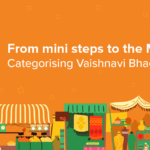Gulab Jamun, an iconic Indian dessert, is a beloved treat that has delighted sweet lovers for generations. This delectable confection, often enjoyed during festivals, weddings, and celebrations, is made from khoya (reduced milk solids) or paneer (Indian cottage cheese). The dough is formed into small, round balls, deep-fried to a golden brown, and then soaked in a fragrant sugar syrup infused with rose water, saffron, or cardamom. The result is a soft, spongy, and syrupy sweet that melts in your mouth, leaving a lingering taste of aromatic spices.
The charm of Gulab Jamun lies not only in its luscious flavour but also in its versatility. Over the years, numerous variations of this classic dessert have emerged, each adding a unique twist to the traditional recipe. From the intensely flavoured Kala Jamun to the dry and travel-friendly Dry Gulab Jamun, these different types of gulab jamun have captivated sweet enthusiasts nationwide. Each type offers a distinct taste and texture, showcasing the creativity and culinary prowess inherent in Indian cuisine. In this blog, we explore the most famous types of Gulab Jamun, taking you on a sweet journey through this cherished dessert’s diverse and delicious world.
Discover the Most Popular Types of Gulab Jamun
1. Classic Gulab Jamun

The Classic Gulab Jamun is where it all began. This traditional version is made from khoya or a mixture of milk powder, flour, and ghee, formed into small balls, deep-fried until golden brown, and then soaked in a warm sugar syrup. The syrup is typically infused with cardamom and rose water, giving it a distinct aroma and flavour.
2. Kala Jamun

Kala Jamun, also known as Black Jamun, is a darker, slightly richer version of the classic. The key difference lies in its extended frying time, which gives it a deep brown or blackish hue. Kala Jamun is made from the same base ingredients but is fried until it develops a dark crust, which adds a hint of caramelization and a deeper flavour profile. The sugar syrup for Kala Jamun is often infused with a higher concentration of saffron and cardamom, enhancing its aromatic appeal.
3. Dry Gulab Jamun

Dry Gulab Jamun offers a unique twist by eliminating the soaking step. After frying, the Gulab Jamun balls are allowed to cool and rolled in powdered sugar or desiccated coconut. This version retains the classic’s essence but has a less syrupy texture, making it easier to store and carry. Dry Gulab Jamun is popular during long-distance travel and is a preferred gift choice during festivals like Diwali.
4. Bread Gulab Jamun

Bread Gulab Jamun is a modern twist on the classic, made using bread as the base ingredient instead of khoya or chenna. Bread slices are soaked in milk, mashed, shaped into balls, fried, and soaked in sugar syrup. This version is quick and easy to prepare, making it a popular choice for home cooks looking to make a quick dessert.
5. Khoya Jamun

Khoya Jamun is a richer, creamier variant made primarily from khoya (reduced milk solids). The dough is prepared using khoya, flour, and a touch of cardamom, shaped into balls, fried, and then soaked in sugar syrup. Khoya Jamun has a denser texture and a more intense milky flavour, making it a luxurious treat.
6. Rava Gulab Jamun

Rava Gulab Jamun is a unique variation made using semolina (rava) instead of the traditional khoya or flour. The dough is prepared by roasting semolina in ghee, mixing it with milk, and shaping it into balls. The balls are then fried and soaked in sugar syrup. Rava Gulab Jamun has a distinct texture and a mildly nutty flavour, offering a delightful twist on the classic dessert. This version is popular for its easy preparation and unique taste.
Order Online Now to Savor These Celebrated Types of Gulab Jamun!
Craving a taste of these delectable varieties of gulab jamun? You don’t have to wait for a special occasion to indulge in these sweet delights. With the convenience of online shopping, you can now order your favourite types of Gulab Jamun by checking the best restaurant near me from the comfort of your home.
Conclusion
With its rich history and delightful variations, Gulab Jamun holds a special place in the hearts of sweet lovers across India. Whether you prefer the traditional syrup-soaked balls or the modern twists like Bread Gulab Jamun, just look for Gulab Jamun restaurants near me, as there is a version for every palate. Indulging in these sweets satisfies your sweet tooth and connects you to a rich culinary tradition that has been cherished for generations.
FAQ
1. How long can you store Gulab Jamun?
Gulab Jamun can be stored in the refrigerator for up to a week. It is best to keep them in an airtight container to maintain their freshness and prevent them from absorbing other flavours from the fridge. If the Gulab Jamun is soaked in syrup, ensure it covers the balls completely to keep them moist. For dry Gulab Jamun, storing them in a cool, dry place in an airtight container is ideal.
2. Are there any variations in how Gulab Jamun is served?
Yes, Gulab Jamun can be served in various ways. The classic version is served warm, soaked in sugar syrup, often garnished with slivered almonds, pistachios or coconut. Some variations, like Khoya Jamun, are richer and can be enjoyed with a drizzle of condensed milk. In certain regions, Gulab Jamun is served with a scoop of vanilla ice cream, creating a delightful contrast of warm and cold.
3. What makes Gulab Jamun so special in Indian cuisine?
Gulab Jamun is special in Indian cuisine due to its rich history, cultural significance, and irresistible taste. It is a staple at festivals, weddings, and celebrations, symbolising joy and sweetness. The dessert’s ability to bring people together and its versatile variations make it a beloved treat across generations.
Author Bio
Satisfying your cravings, one bite at a time. Discover the best eats, trends, and uncover the hidden gems with us to make your online ordering or dining experience a memorable one.















































































